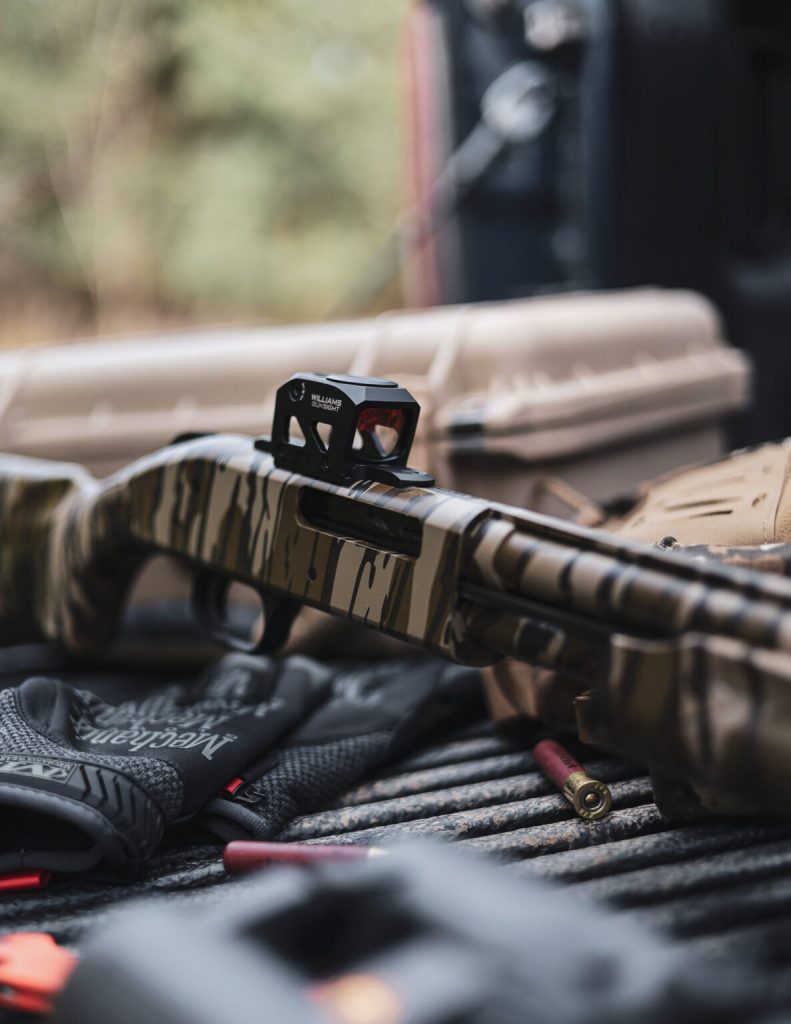The Lowdown on Williams Gun Sight’s Low Reflex Sight
Williams Gun Sight, a well-known firearm sight manufacturer and operator of one of Michigan’s largest firearm dealers, has jumped off the deep end into the electronic optic category with a creatively designed reflex sight perfect for turkey hunters.
Williams Gun Sight’s Low Reflex Sight (LRS) features innovative Reverse Reflex Sight technology that creates a reticle positioned 30% lower compared to standard reflex sights when used with a picatinny rail. While most red dot sights build their electronics into the bottom of the sight platform, the LRS uses the top, which helps lower the reticle position. Designed for shotguns and rifles with a picatinny rail installed or for those drilled/tapped to accept optics, the LRS platform also easily installs via an adapter plate that is model-specific for firearms without a rail. Using the adapter plate (for Remington, Benelli and Mossberg models), shooters can see up to a 50% reticle height reduction compared to standard reflex sights attached to a picatinny rail.

Ideally made for turkey hunters, the LRS is a set-it-and-forget-it optic. Install the sight to a rail or drop in the screws on a mounting plate/sight combo, and with a simple elevation and windage adjustment to align with your preexisting shotgun barrel bead, you’re ready to dial in the pattern. Once you are satisfied with the turkey load pattern after some range time, the spring woods await.
Shooters can cycle through six different illumination options on the LRS red dot, which is a 3 MOA (minutes of angle) dot surrounded by a 32 MOA segmented circle. A quick refresher on MOA red dots: a red dot with 1 MOA will cover 1 inch of the target at 100 yards, so a 3 MOA red dot would cover about 1.5 inches or less of a turkey at 50 yards and in. That’s about the length from head to below the waddles on a turkey neck, an ideal aim point. Smaller MOA sizes usually provide more precision over longer distances but are difficult for some to put on target easily and quickly; larger MOA dots allow faster target acquisition at close range, but cover up more of the target which can obstruct and decrease pinpoint accuracy.
Ultimately, the LRS setup is the best of both worlds. It also includes a six-hour sleep function, shutting off if left on that long to save battery (2,000-hour battery life estimate). The LRS’ sealed design combats moisture and dust, and the sight is built to withstand the elements with a machined high-grad aluminum construction.
WGS plans to add more mounting plates to its adapter plate lineup in the future, so be sure to check to see if your firearm plate is available. Not all firearms are drilled/tapped to accept optics. The LRS is not pistol rated, but it will perform on rimfire pistols with a non-reciprocating slide (Ruger MK series, Browning Buckmark series or Volquartsen pistols).
Bottom line, for $269.95 (MSRP), you’re getting a sight that will put you on target — regardless of cheek-to-stock alignment, gun mount and hold — for the long haul, or at least 333 six-hour turkey hunts until the battery runs out! Sign us up for that.
Check out the LRS, adapter plate options ($21.95 MSRP) and more at the online Williams Gun Sight store (https://williamsgunsight.com/) or call them at (800) 530-9028 for more information.
